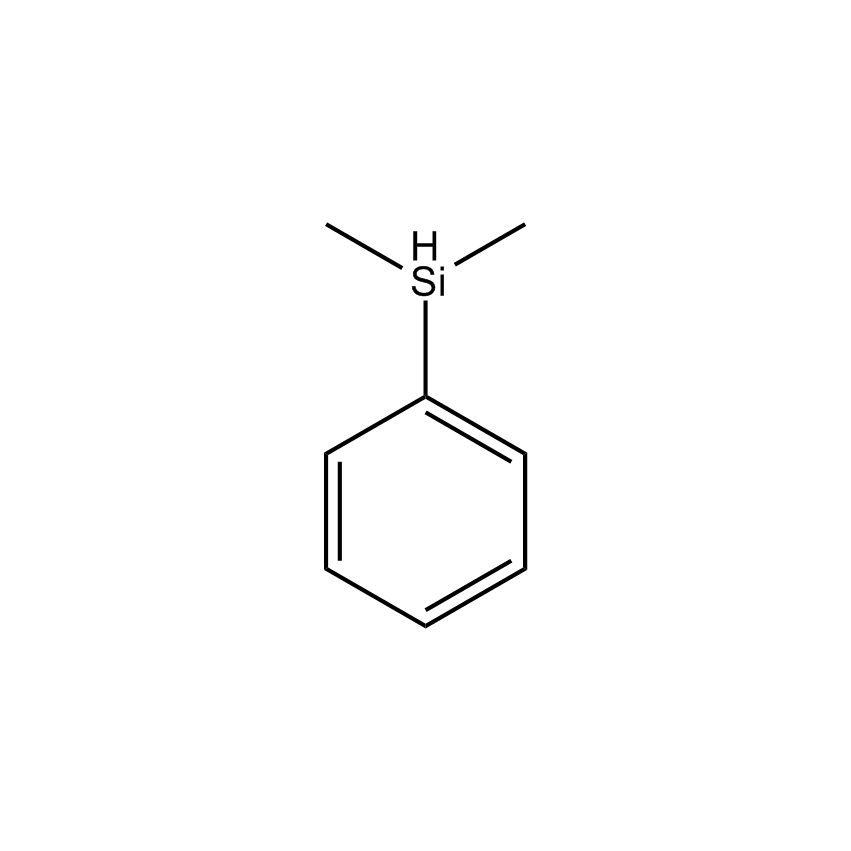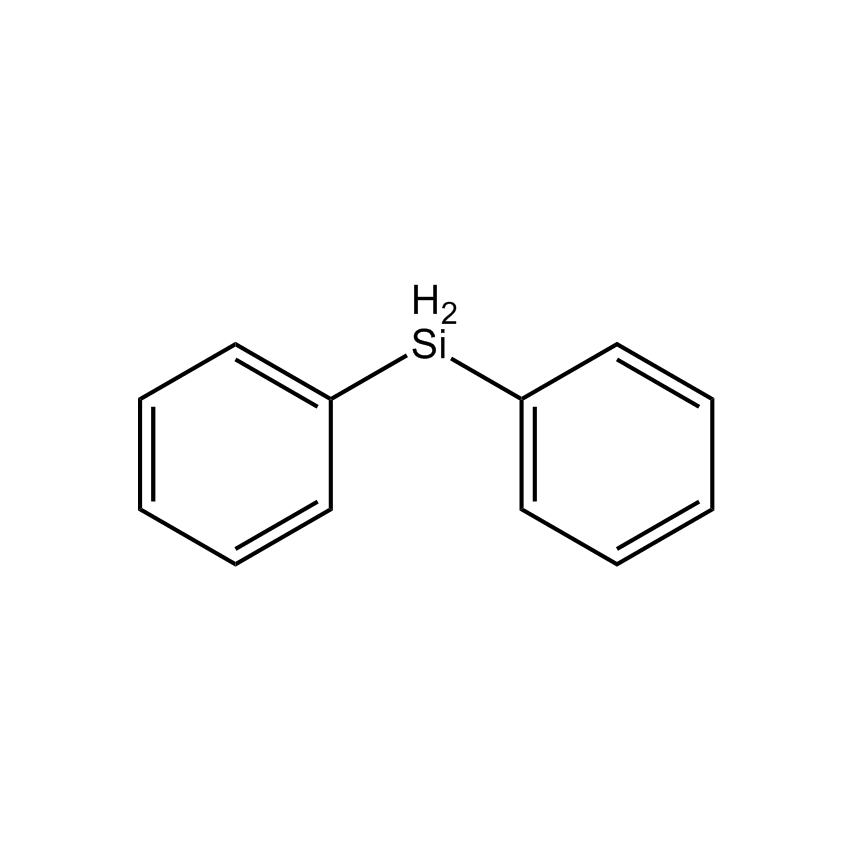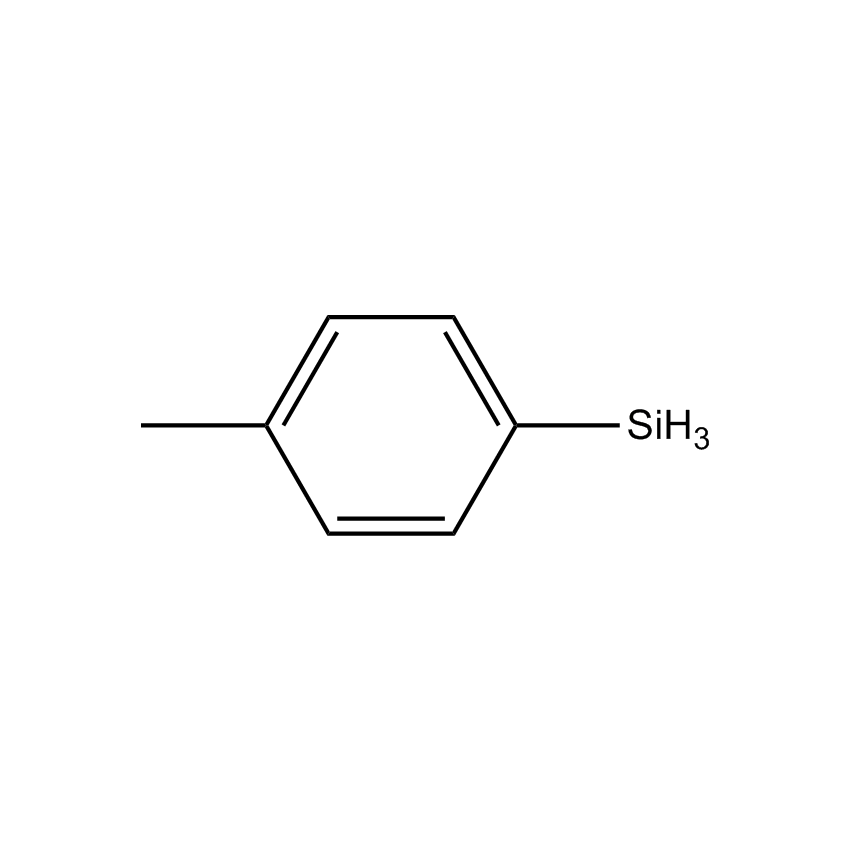Additional Properties
- Einecs Number 212-170-5
- Synonyms DIMETHYLPHENYLSILANE
- HMIS 2-2-1-X
- Molecular Formula C8H12Si
- Molecular Weight (g/mol) 136.27
- Purity (%) 97%
- TSCA Yes
- Boiling Point (˚C/mmHg) 156-157
- Density (g/mL) 0.889
- Flash Point (˚C) 38 °C
- Melting Point (˚C) -124°
- Refractive Index @ 20˚C 1.4995
Application
Review of synthetic utility.1
Used to prepare ?-phenyldimethylsilyl esters with high enantioselectivity.2
Yields optically active reduction products with chiral Rh or Pd catalysts.3
Undergoes 1,4-addition to pyridines forming N-silylated dihydropyridines.4
Hydrosilylation of 1,4-bis(trimethylsilyl)butadiyne can go to the trisilyl allene or the trisilyl enyne.5
Reference
1. Handbook of Reagents for Organic Synthesis, Reagents for Silicon-Mediated Organic Synthesis, Fuchs, P. L. Ed., John Wiley and Sons, Ltd., 2011, p. 254-255.
2. Zhang, Y.-Z. et al. Angew. Chem., Int. Ed. Engl. 2008, 47, 8496.
3. F&F: Vol. 12, p 209; Vol. 13, p 123; Vol. 15, p 168.
4. Gutsulyak, D. V. et al. Angew. Chem., Int. Ed. Engl. 2011, 50, 1384.
5. Kusumoto, T. et al. Bull. Chem. Soc. Jpn. 1992, 65, 1280.
Safety
Phenyl-Containing Blocking Agent
Used as a protecting group for reactive hydrogens in alcohols, amines, thiols, and carboxylic acids. Organosilanes are hydrogen-like, can be introduced in high yield, and can be removed under selective conditions. They are stable over a wide range of reaction conditions and can be removed in the presence of other functional groups, including other protecting groups. The tolerance of silylated alcohols to chemical transformations summary is presented in Table 1 of the Silicon-Based Blocking Agents brochure.
Tri-substituted Silane Reducing Agent
Organosilanes are hydrocarbon-like and possess the ability to serve as both ionic and free-radical reducing agents. These reagents and their reaction by-products are safer and more easily handled and disposed than many other reducing agents. The metallic nature of silicon and its low electronegativity relative to hydrogen lead to polarization of the Si-H bond yielding a hydridic hydrogen and a milder reducing agent compared to aluminum-, boron-, and other metal-based hydrides. A summary of some key silane reductions are presented in Table 1 of the Silicon-Based Reducing Agents brochure.
Phenyldimethylsilane; Dimethylphenylsilane;
Silicon Chemistry, Articles
The Si-H bond, based on the relative electrongativities of Si and H, is polarised such that the hydrogen is slightly hydridic in nature. The fact that the silanes are not strongly hydridic makes them excellent candidates for mild and selective reductions of organic functional groups.
Silicon Chemistry, Articles
The reduction of a comprehensive range of organic functional groups ranging from carboxylic acids to aryl fluorides have been shown to be possible with a variety of organosilanes. A comprehensive review of the ionic and transition metal-catalyzed reductions of organic functional groups has recently appeared.
Silicon Chemistry, Articles
Silicon Chemistry, Articles
Some of the general approaches to the key steps in the synthesis of gliflozins, a class of glucose transporters, are discussed. In particular the glycosidation step for the introduction of the key aryl moiety onto the glucose and the reduction steps are presented. Click here for more product information on tetramethyldisiloxane (TMDO, TMDS) reducing agent.



